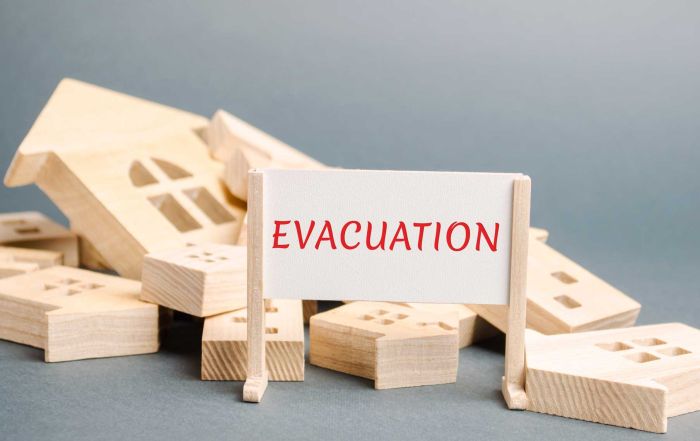Communicating Food Safety Messages: The Follow-Up
Earlier this month, we posted our first SafeBites Webinar of 2022, Getting the Word Out: Communicating Your Organization’s Food Safety Practices, presented by Dr. Catherine Strohbehn. If you haven’t had a chance to watch it, please do. It is full of useful information on the who, what, when, and where of effective communication.
You may be asking yourself, why is it important that we communicate food safety messages with your customers? Look no further than your own perceptions of your local restaurant. Have you ever gone into an unkept bathroom in your local restaurant that is void of the soap or paper towels necessary for effective handwashing and wondered how the employees are washing their hands adequately? Or observed an employee handling ready-to-eat food items in a restaurant without gloves on their hands and wondered how safe your food really is?
As much as we’d like to think that those situations do not occur in each of our establishments, these situations are the exact reason that we need to communicate with employees how much time and effort we put into serving safe food. And let’s be real – the amount of time and effort that we do put into the service of safe food when translated into actual dollars is quite substantial, so use that to your competitive advantage!
… isn’t all about messaging to consumers, you must follow through on the promise of safe food. Remember that customers view your operation from a different lens than you or I….
Studies have shown that consumers place a great deal of trust in the industry to provide safe food and when a business fails to provide safe food and this results in a foodborne illness outbreak, the consequences can be devastating to your business. So, spend some time in the coming months determining what your communication strategy will be relative to food safety. While we realize this will not be your only message, including food safety messaging into your social media and print advertising campaigns can help build trust with your customers.
But it isn’t all about messaging to consumers, you must follow through on the promise of safe food. Remember, customers view your operation from a different lens than you or I who are in the industry will. Years ago, I remember my mother accompanying the 4-H group she was leader of on a tour at a local restaurant. The restaurant was one of the top restaurants in Eastern Iowa at the time. I don’t recall much of her comments, but I do remember she was dismayed at how dirty the kitchen was. When digging further, I realized she was upset with how dirty the floor was. Being in the industry at the time, I attempted to convey to her that while the floor was important, it was more than likely mid-shift and it would generally be swept and mopped between shifts and that it was more important to look at actual food handling behaviors and work surface cleanliness, than it was the floor. But, she kept going back to the floor cleanliness because that is what was important to her and I think she compared it to her own kitchen. Her lens was vastly different than mine and it is important to remember that with your consumers, too.
Consumers who visit your establishment and don’t see food safety practices they perceive as most important will almost always side with what they witness, versus what you say you might be doing. Check out our infographic on What Consumers Think, which outlines some visible food safety behaviors that positively influence your customers. The top behavior that inspires the most consumer confidence in food safety? Wearing clear disposable gloves! Over 55% of consumers leave more confident in your food safety behaviors if they see food handlers wash hands and change gloves.
It is important to remember that effective communication is achieved only when the customer trusts that you are knowledgably, but it must also be backed up with sound practices in the establishment. Otherwise, communicating food safety will be a fruitless endeavor. Risk Nothing.
READ MORE POSTS
Cross Contamination and the Surfaces that go Unnoticed
In October, I ran across a new research study published in the Journal of Food Protection in early-September. The article explored cross contamination in consumer kitchens during meal preparation. One of the authors was a previous SafeBites presenter, Dr. Ellen Shumaker, at North Carolina State University. Although the setting was consumer kitchens and not the commercial kitchen many of you deal with daily, the findings were very applicable to what we often see in the foodservice setting.
Emergency Preparedness: The Not-so Calm After the Storm
If you and your foodservice operation have been hit by an emergency or other disaster, what comes next and how do you move forward? Much of the answer to this is predicated on the actual disaster that you are dealing with – a flood is certainly a much different than a fire, but some of the food safety considerations remain the same if your business has been left intact and has not been damaged by the disaster.
Emergency Preparedness and Responding to a Disaster with Food Safety in Mind
As I write the first blog this month, the realities of the devastation in Florida are coming to light as we also deal with the aftermath of Hurricane Fiona, which impacted Puerto Rico late in September. Recent news has been focused on the recovery efforts for all who have been impacted. Thus, I thought it would be fitting this month to discuss emergency disaster planning resources in our first blog and delve into recovering from a disaster in our second blog later this month.
During National Food Safety Education Month is it time for Your Food Safety Refresher?
You see them in every restaurant and commercial foodservice operation across the United States. Framed and proudly displayed, often by the kitchen, the cashier, the kitchen entrance, or the service counter - just as they should be. To what am I referring? The food safety certification certificates, of course!










